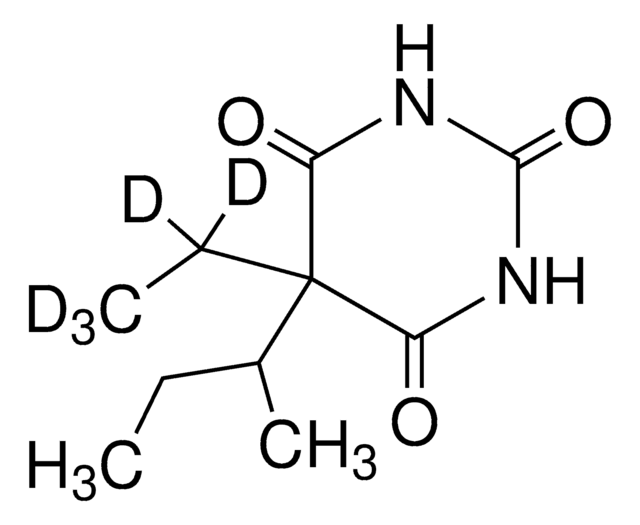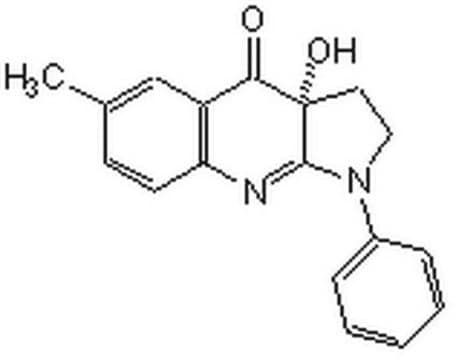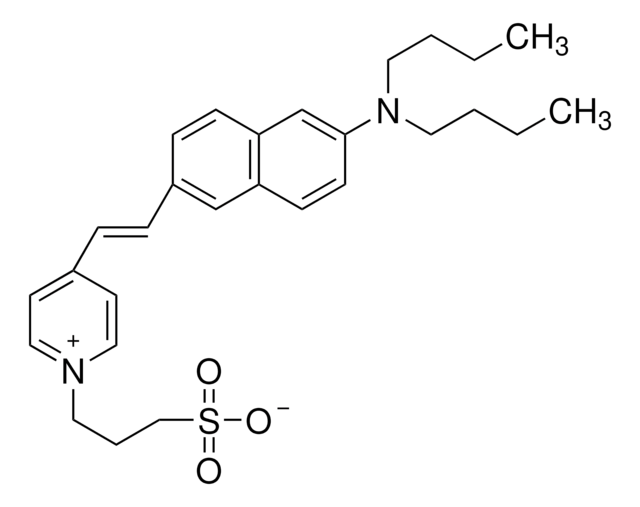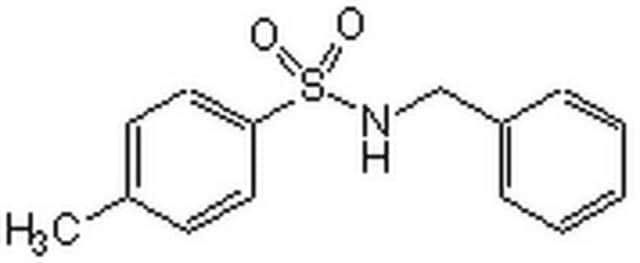B0560
(−)-Blebbistatin
≥98% (HPLC), solid, cell cycle inhibitor
Synonym(s):
1-Phenyl-1,2,3,4-tetrahydro-4-hydroxypyrrolo[2.3-b]-7-methylquinolin-4-one
About This Item
Recommended Products
product name
(−)-Blebbistatin, solid, synthetic
form
solid
solubility
DMSO: 5 mg/mL
chloroform: soluble(lit.)
ethyl acetate: soluble(lit.)
methanol: soluble(lit.)
methylene chloride: soluble(lit.)
storage temp.
−20°C
SMILES string
Cc1ccc2N=C3N(CC[C@@]3(O)C(=O)c2c1)c4ccccc4
InChI
1S/C18H16N2O2/c1-12-7-8-15-14(11-12)16(21)18(22)9-10-20(17(18)19-15)13-5-3-2-4-6-13/h2-8,11,22H,9-10H2,1H3/t18-/m1/s1
InChI key
LZAXPYOBKSJSEX-GOSISDBHSA-N
General description
Application
Biochem/physiol Actions
Features and Benefits
Storage Class Code
11 - Combustible Solids
WGK
WGK 3
Personal Protective Equipment
Certificates of Analysis (COA)
Search for Certificates of Analysis (COA) by entering the products Lot/Batch Number. Lot and Batch Numbers can be found on a product’s label following the words ‘Lot’ or ‘Batch’.
Already Own This Product?
Find documentation for the products that you have recently purchased in the Document Library.
Customers Also Viewed
Articles
Cell cycle phases (G1, S, G2, M) regulate cell growth, DNA replication, and division in proliferating cells.
Cell cycle phases (G1, S, G2, M) regulate cell growth, DNA replication, and division in proliferating cells.
Cell cycle phases (G1, S, G2, M) regulate cell growth, DNA replication, and division in proliferating cells.
Cell cycle phases (G1, S, G2, M) regulate cell growth, DNA replication, and division in proliferating cells.
Our team of scientists has experience in all areas of research including Life Science, Material Science, Chemical Synthesis, Chromatography, Analytical and many others.
Contact Technical Service















